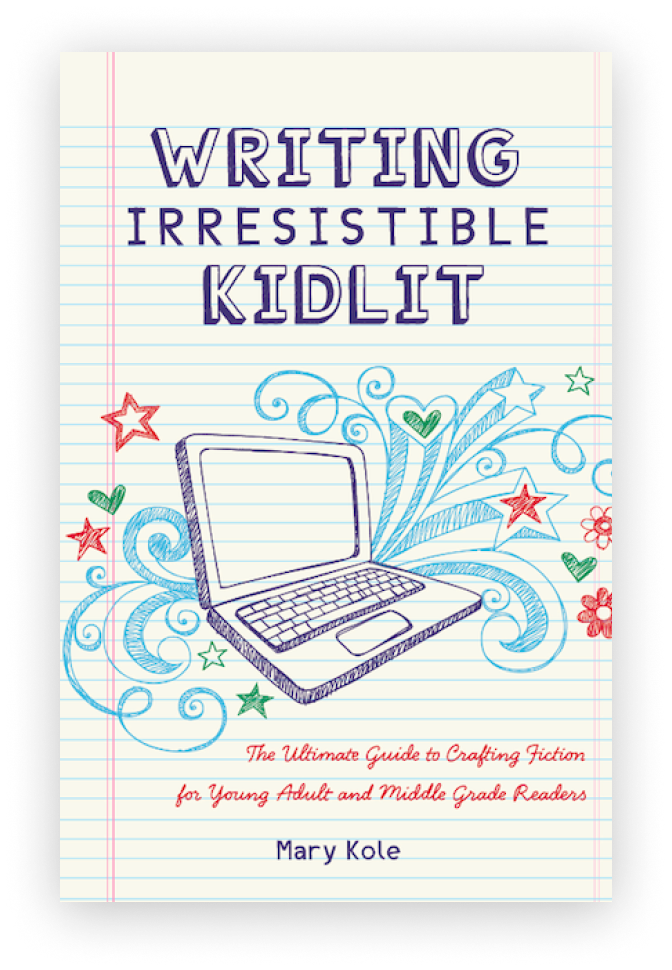How to Work with a
Publishing House
By Mary Kole
Mary Kole is a former literary agent, freelance editor, writing teacher, author of Writing Irresistible Kidlit, and IP developer for major publishers, with over a decade in the publishing industry.
Publishing a book is not just a dream, but a daunting task and a labor of love as well. Every aspiring writer would love to be on a bestseller list and have their book stacked on bookshelves across the globe. But how do writers achieve their publishing dreams? What path should they go for to make their manuscripts available to readers everywhere? In the world of literature, there are two main paths to crafting a publishing strategy, working with a traditional publishing house or going independent and self-publishing. In this article, I’ll discuss the traditional publishing house route and how it works—including its benefits and limitations—as well as other avenues to publication for aspiring writers and their manuscripts.
Working with a Traditional Publishing House
Traditional publishing, as the name implies, is the standard, tried and tested method for bringing a book to market in the publishing industry. To get traditionally published, writers submit a book proposal or complete manuscript to literary agents and publishers who review and select the pitches with high potential for a specific target audience. Although authors often face difficulties in getting picked up by a publishing house, it’s essential to note that it remains the best avenue for writers who hope to sell their books widely and get them into distribution in various channels.
One of the benefits of publishing your work traditionally with a publishing house is having an experienced team supporting you during the editing process. A traditional publishing house has a team of skilled editors that work with authors to help craft a solid manuscript, and other publishing routes can find it difficult to top this level of service.
Apart from editing, a publishing house will provide writers with a professional book cover design, typesetting, production, book marketing, and distribution. All of these are necessary to make sure the book gets to shelves.
However, it’s vital to know that getting a book into a publishing house is not an easy feat. A publishing house, especially a big one, will usually have high standards, rejecting a vast number of the manuscript submissions they receive, even those that come from literary agents. Therefore, writers who want to go this route need to level up their writing skills and keep abreast of the present publishing industry trends.
You also have to understand that while traditional publishing provides a significant boost to an author's career, it does come with limitations. For instance, a publishing house might rarely take on work that falls outside conventional categories, instead choosing to chase trends instead of support visionaries and freewriting.
Think Outside the Publishing House
Suppose you’ve gone on manuscript submission to various traditional publishing houses and your work still hasn’t been accepted. Don’t give up. There are other non-traditional methods that aspiring writers can take advantage of. These methods include self-publishing and hybrid publishing, though the latter can sometimes be seen as a publishing scam.
Self-publishing involves authors taking complete charge of the publishing process, from book editing to cover design and distribution. Although it comes with more control over the various steps of book publishing, self-publishing also comes with more uncertainty and more responsibility for the entire book's success—especially when it comes to book promotion. With self-publishing, it’s very possible to see your written work online quickly with sites such as Amazon's Kindle Direct Publishing to release a book. It’s important to note that you will either perform all of the services a traditional publishing house would on your own behalf, or pay for these services—like developmental editing and proofreading.
Print-on-demand allows authors to self-publish their books with various bookseller platforms such as Amazon, Barnes & Noble, and others. Books are printed on an on-demand basis and allow the authors to be in charge of their production process while theoretically reaching a broader audience. However, it’s important to know that book distribution to brick and mortar stores tends to be a tough proposition for self-published projects unless the work really takes off.
Using a traditional publishing house remains one of the best avenues to publish and sell books widely. With expert book editing, cover design, and distribution, authors get access to the entire publishing process's professionalism and the industry's experiences. However, the road to traditional publishing is arduous and requires writers to strive to level up their craft and keep up with trends or write to market. Still, there are other non-traditional routes available to writers, including self-publishing, e-publishing, and print-on-demand. Each method has its pros and cons, so aspiring writers should conduct their own research and find the one that suits their writing goals best.

Click here to purchase Writing Irresistible Kidlit, my book on fiction craft for MG and YA novels, out from Writer's Digest Books. This will show you my writing craft philosophy and give you lots of valuable advice, including tips for the novel revision process and self-editing. There are over 35 example novels cited and discussed throughout. It’s a valuable resource for any writer’s toolkit.
Click here to purchase Irresistible Query Letters, my book on query letters, including over forty examples with comprehensive notes on each one. There’s a ton of submission advice, best practices, and insider information in these pages, and you’ll really enjoy seeing what other writers are doing in the slush.




